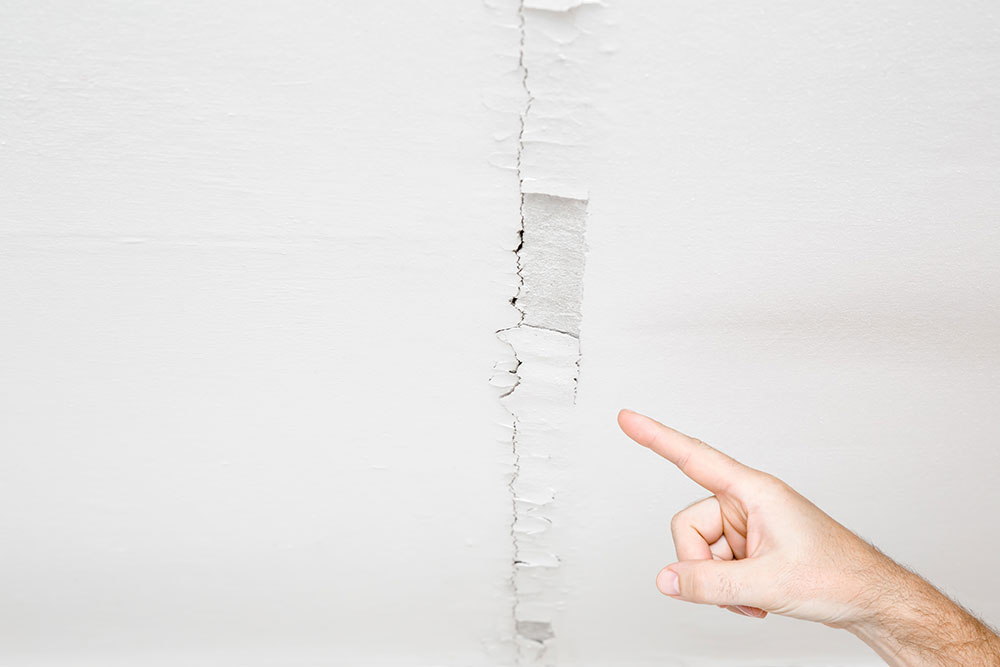While smaller cracks can be a sign of age or settling, larger cracks should be taken seriously. The location of the cracks in your ceiling will let you know just how serious the problem may be.
Cracks along the edges of a ceiling are a normal part of a home’s settling or movement, but cracks across the middle of your ceiling are more concerning. If the cracks are wide, long, and more than one, it’s not going to be good news.
Type of Cracks
There are different types of cracks that may appear in your ceiling and for different reasons.
Spiderweb Cracks
Spiderweb cracks are mostly a normal part of a home settling over the years. They can run throughout the home, not only on the ceiling. These types of cracks are usually small and are often due to old layers of paint or drywall plaster cracking.
They can be caused by foundation settling or moisture damage. Often they are not very big or deep, but larger ones should be checked, just in case there is a bigger problem.
Vertical Cracks
These are cracks that can start on the wall and move all the way across the ceiling. There may be several of them. Horizontal cracks will move from the wall to the ceiling, or there may be a gap in larger cracks between the ceiling and the top of the wall.
These can happen if you live near a train, subway, major highway, airport, or something that makes your house physically shake or move. These may be caused by earthquakes but can indicate a structural problem.
Discolored Cracks
If there are cracks that look darker, they are almost always caused by moisture. There may be a leak above, plumbing problem, or leak in the roof over the area. If these recently appeared after a storm, you likely have a leak in the roof.
There may be blistered paint around the crack or in a larger patch on the ceiling. This indicated moisture or a leak. This needs to be checked and repaired before it spreads and causes more damage.
Sagging Cracks
If there is a section of your ceiling that is drooping or sagging, with cracks around or beside it, that is a big problem. This could be caused by water damage, structural damage, something too heavy above, or shifting in your foundation.
Ceiling Cracks and Your Foundation
Ceiling cracks can certainly be an indication that there are problems with your foundation. They could be caused by excessive weight above, water and plumbing concerns, and even just the old age of the house.
If the home is newer, it can be from the settlement of the foundation. However, it is always better to have the cracks checked out by a professional. Some cracks may be normal and caused by a settling foundation. However, you should have them checked before painting over them.
If you have cracks in the ceiling in several rooms, you need to call us right away. This can most certainly be signs of a foundation problem. There may have been significant settling or shifting on one side.
Large cracks should also be treated as potentially being a problem. These do not happen naturally and will not get any better if let alone. Call us to give your home and foundation an inspection to find the damage and make the repairs quickly.
Here at Olson Foundation Repair, we have over thirty years of experience and knowledge and we bring that to you every time. Call us for an estimate today.

